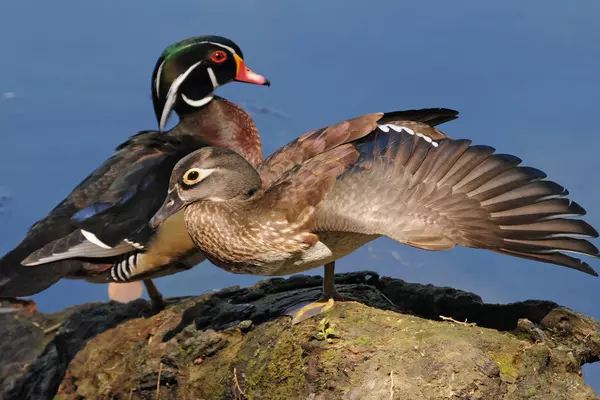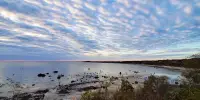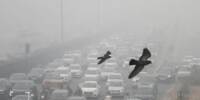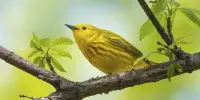Changes in climate and land use can put early-nesting ducks in jeopardy. Ducks typically base the timing of their nesting activities on environmental cues such as the availability of suitable nesting sites, food resources, and favorable weather conditions.
Every year, approximately 10 million waterfowl migrate north to their breeding grounds in North America’s Prairie Pothole Region, but the landscape that greets them has changed. Weather patterns and agricultural practices have altered the pothole-dotted native grasslands that waterfowl have relied on for thousands of years.
As a result of these changes, some waterfowl populations have increased while others have declined. Nesting date is an important factor in determining winners and losers in the Prairie Pothole Region, according to a new study led by a Penn State-led research team. According to team leader Frances Buderman, assistant professor of quantitative wildlife ecology, waterfowl nest in a variety of habitats in the region, including idle grassland, cropland, and over water.
“But when early nesting ducks arrive in the Prairie Pothole Region, many fields are covered in debris left from the previous fall’s harvest, mainly stubble from cereal grains,” she said. “Although this habitat looks inviting, the eventual replanting of these fields, as opposed to leaving them fallow, makes the ducks more vulnerable to predators and often results in their nests being destroyed by agricultural activities such as tilling and planting.”
Early nesting ducks that don’t nest in cropland, and diving ducks such as canvasbacks, nest over water and are not likely to be impacted by this trap. Climate change, which may allow farmers to till and plant earlier in the spring, could make matters worse.
Frances Buderman
Since 1955, the US Fish and Wildlife Service and the Canadian Wildlife Service have used the Waterfowl Breeding Population and Habitat Survey to monitor spring population abundances of North American waterfowl, producing one of the world’s largest datasets on vertebrate populations.
These ducks are adapted to nest in mixed-grass prairie, and as that natural habitat has been largely replaced by agriculture in the Prairie Pothole Region, the birds have become confused, according to Buderman.
“Last year’s stubble looks good to them from the air, but in reality, it does not offer the same advantages and protections that the grass does,” she said. “Over time, on a large scale, this association with cropland can lead to lower reproductive success and declining population numbers for early nesting ducks that breed in the region.”

In earlier research, Buderman’s research group in the College of Agricultural Sciences focused on northern pintail ducks, a species that has been in decline since the 1980s. They identified the proclivity of northern pintails to nest in agricultural fields as an “ecological trap” because the number of pintail the following year — a product of demographic processes, such as reproduction and survival — declined with increasing use of cropland.
The researchers were left wondering, however, if the response of the northern pintail was unique, potentially explaining the diverging trends in abundance among waterfowl in the region. Buderman and colleagues report in the Journal of Animal Ecology on that the timing of nesting is a key factor in determining the effect of cropland nesting on demographic processes. The most negative demographic responses to agricultural fields were observed in early nesting ducks.
“This isn’t to say that all early nesting waterfowl are going to struggle,” Buderman said. “Early nesting ducks that don’t nest in cropland, and diving ducks such as canvasbacks, nest over water and are not likely to be impacted by this trap. Climate change, which may allow farmers to till and plant earlier in the spring, could make matters worse. An earlier spring warm-up could also lead to a mismatch between nesting activities and food availability.”
To reach their conclusions, the researchers analyzed data from the Waterfowl Breeding Population and Habitat Survey from 1958 to 2011 and focused on nine duck species that have traditionally used the Prairie Pothole Region as their breeding grounds: American wigeon, blue-winged teal, canvasback, gadwall, mallard, northern pintail, northern shoveler, redhead and ruddy duck.
The researchers calculated species-specific responses to climate and land-use variables in the region, which has transitioned from mixed-grass prairie to cereal grain, oil crop fields, corn, wheat, sunflower, and soybean fields.
They began by estimating the effects of changes in climate and land-use variables on habitat selection and population dynamics for the nine species, assessing species-specific responses to environmental change. The researchers were able to see patterns in species-level responses and identify where species chose variables that were detrimental to their population dynamics (such as northern pintail and cropland).
Buderman pointed out that they discovered that northern pintail, American wigeon, and blue-winged teal all had extreme responses to habitat changes.
“Each of the species we studied responded differently to changes in climate and land use,” she explained. “We found species-level differences in demographic and habitat-selection responses to climate and land-use change, complicating community-level habitat management.” Our findings emphasize the significance of multi-species monitoring and community-level analysis, even among closely related species.”
















